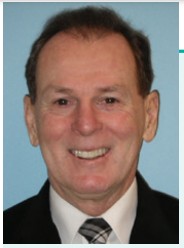Drs. Donald J. Rinchuse and Dara L. Rinchuse discuss how to motivate patients to understand the importance of retention.
 Drs. Donald J. Rinchuse and Dara L. Rinchuse discuss the importance of establishing a policy for the retention phase
Drs. Donald J. Rinchuse and Dara L. Rinchuse discuss the importance of establishing a policy for the retention phase
Orthodontists around the world echo a similar cordial greeting to patients at the start of their treatment. That is, “Are you ready, Suzie, to start your treatment?” However, have you ever heard of the orthodontist asking the same question when the patient is about to get his/her “braces”/appliances off? The patient and parent(s) would look at the orthodontist bewildered. They would think to themselves, I just went through 2 years of orthodontic treatment, and the orthodontist is asking if I am ready to start my orthodontic treatment? What does he/she mean?
Orthodontists then have the opportunity to explain these seemingly contradictory and paradoxical remarks by affirming that the braces/appliances part of orthodontic treatment has ended. But this phase of treatment was just the preliminaries, and the real part of orthodontics starts when patients get their braces off, not when they get them on. Orthodontists edify their comments. If orthodontic patients do not wear retainers after orthodontic appliances are removed, the teeth will move and shift back toward where they were before treatment started. The only unknown is how much they will go crooked and relapse. Orthodontists advise, “If orthodontic patients do not wear retainers as directed, and the teeth relapse, the patient and family have wasted time and money.” Assuredly, the issue of retention and relapse has been explained to the patients and family prior to the start of treatment as part of the informed consent.
No retention plan will be successful without the wholehearted participation of both the orthodontist/staff and the patient/family.
To be clear, we are writing about removable retainers and not fixed retainers — i.e., fixed retainers have their very own advantages and disadvantages. Of note, a recent study found that mandibular lingual fixed retainers failed 52.3% of the time after just 2 years.1 The reason for this may be that few patients keep their fixed orthodontic retainers over a lifetime. Somewhere during the patients’ life, a fixed retainer will break. Then often the teeth will relapse before the patients realize it or schedule an appointment to repair it. Often the fixed retainers are removed, and patients are left without a retainer or are switched to a removable retainer.
No retention plan will be successful without the wholehearted participation of both the orthodontist/staff and the patient/family.
General considerations
With the competitive contextual environment of present-day orthodontics coupled with the large indebtedness of recent orthodontic graduates, retention has taken a backseat to other practice considerations — i.e., active treatment, marketing, advertising, staff management, scheduling, risk management, etc. This is particularly true when most orthodontists have a fee schedule that focuses on remittances only during active treatment. It is therefore not surprising that motivating patients to wear retainers may not be a priority for modern orthodontic practices.
As previously mentioned, many orthodontists have a fee schedule that includes both the active and retention phases of treatment bundled into one sum. The financial arrangements for payment of the fee, irrespective of the payments terms, is that full payment is due before braces/aligners are removed. This desensitizes the orthodontist and patient to take the retention phase of treatment seriously because the orthodontist has received the total payment during the active phase of treatment. The orthodontist often feels that he/she is seeing retention patients without any monetary remuneration. The consideration of many orthodontists is that retention patients clutter their workday and take away from a financially productive schedule. Many financial gurus tell orthodontists to see retention patients as less often as possible, with many only seeing them for a year posttreatment. Retention patients are then advised to only call and schedule an appointment if they have any problems, such as lost retainers or the teeth moving.
Motivating the orthodontists
Astute business-oriented orthodontists realize that it makes perfect sense to pay attention to the retention phase of orthodontics. An old adage is still true today: “Take care of your patients, and the money will take care of itself!” Without the enthusiastic attention to retention by the orthodontist and staff, even the best retention strategies will fail. The orthodontist and staff must take to heart the sobering conviction that all the hard work and effort put into play to achieve an excellent orthodontic outcome will be lost if patients do not wear retainers as directed. One would think that this would be enough to motivate the conscientious clinical orthodontist.
Importantly, an orthodontist’s professional image in a community is based upon patients’ teeth staying straight. If orthodontic patients’ teeth relapse, this is poor public relations for the orthodontic practice. Soon the word will get around in the community that the teeth of this orthodontist’s patients do not look so good. Patients and families often blame the orthodontist rather than take responsibility for retention failures. With this in mind, parents (and patients) will tell other parents that Suzie’s teeth moved back because the orthodontist took her braces off too soon.
Some orthodontists have a “retention fee” built into the financial structure. Their fee structure is based on separate remittances for active treatment and retention treatment. In this set up, the orthodontist will not be seeing patients without receiving compensation. All considered, this seems to be a better financial arrangement compared to the one-fee schedule for both active treatment and retention.
There are a number of in-house and commercial programs that offer patients replacement retainers at a cost outside the contracted fee. This could be for a limited number of replacement retainers or for a lifetime. Certainly, the advent of in-house 3D printing has helped offices with replacement retainers. Based on recent technology (scans, 3D printing, etc.), permanently held scans can be used to produce retainers at any time. These programs would benefit both practitioners and patients in regard to fostering appropriate retention protocols. Nonetheless, how these programs translate into patients taking orthodontic retention seriously has yet to be researched.
Motivating the patients
Motivating patients to wear removable retainers can be an arduous task. Nonetheless, the first step is to convince patients and families that retainer wear is important. From an intellectual and practical perspective, and even though they know this, the orthodontist and staff can explain to them that all the time and money spent on orthodontics will be wasted if patients do not wear retainers, and their teeth move back. This statement can be made even clearer by telling them that orthodontists have a new influx of patients coming into their offices. They are middle-aged post-orthodontic patients who did not wear retainers as prescribed, and their teeth relapsed. Now they are coming in to see the orthodontist for retreatment, mostly looking for clear aligners. They are paying for orthodontics a second time. Lesson learned?
Certainly, patients and families are motivated to follow orthodontic retention protocol in different ways. One way is as discussed previously, “Are you ready to start your treatment?” Using such hyperbolic and paradoxical expresses can work for some patients and families. Another way is a repeated interrogatory; recite back and forth several times the consequences of not wearing retainers. That is, the orthodontic assistant will ask this question and give the answer. “Johnny, what will happen if you don’t wear your retainers? Your teeth will move back.” The orthodontic assistant repeats again, “Johnny, what will happen if you don’t wear your retainers?” Then this time Johnny answers the integratory by stating, “My teeth will move back.” This can be repeated several times.
Patients can be asked to sign a “Patient Retention Agreement.” The language for the agreement is something like this: “I understand that if I do not wear my retainer and follow the retention protocol I received, my teeth will move back (relapse) and get crooked. I also understand that retainer wear is lifelong.”2 A parent signs as a witness to this document. The patient executes retention agreements prior to the start of treatment as well as at the end of treatment. Having signed a “Patient Retention Agreement” before and after treatment, patients and families would have difficulty denying that they were not informed of the importance of orthodontic retention.
Further, the orthodontist and staff can talk to attentive adolescents about the positives of having a beautiful smile now and later in life. It can be explained to patients that a pleasing facial appearance and, importantly, a nice smile has been demonstrated to provide those with these physical characteristics with more attention from teachers, better jobs, more love interests, and so on.3 For some patients, it can be mentioned how important it is going to be to have straight teeth on their wedding day. There are many psychosocial applauding consequences of having a healthy smile.3
There are many other ways orthodontists and staff can elicit a positive retention result. Orthodontists can add more retention appointments before releasing patients to their own accountability. From a fiscal viewpoint, this is perhaps not the best option for orthodontists who have one fee that includes both active treatment and retention. A consideration can be made about text messaging patients to remind them of retention appointments and to remind them to wear their retainers. There are numerous orthodontic software programs that make this a relatively easy process.
Conclusions
Today’s orthodontists are in a better position than past generations to set up effective retention compliance programs. What better advertising and marketing is there than having posttreatment orthodontic patients walking around your community and showing their friends and neighbors how nice their teeth look, even after being out of braces for several decades? Orthodontists must recognize that there is a reward for paying attention to the retention part of orthodontics, even if this is in the long term. For sure, adequate monetary remunerations need to be established for orthodontic retention appointments. Orthodontists understand this, but they need to take it to heart and execute a well thought-out retention plan that perhaps utilizes one or more of the suggestions in this article.
Dr. Amy Jackson discusses retention as an important part of orthodontic treatment in “Fixed lingual retention: the gold standard or a relic of orthodontics past?” Take the quiz and receive 2 CE credits! https://orthopracticeus.com/ce-articles/fixed-lingual-retention-the-gold-standard-or-a-relic-of-orthodontics-past/
- Wegrodzka E, Kornatowski K, Pandis N, Fudalej PS. A comparative assessment of failures and periodontal health between 2 mandibular lingual retainers in orthodontic patients- a 2-year follow-up, single practice-based randomized trial. Am J Orthod Dentofacial Orthop. 2021;160(4):494-502E1.
- Rinchuse DJ, Rinchuse DL. Risk management: supplemental informed consent documents. Orthodontic Practice US. 2018;9(2):98.
- Rinchuse DJ, Rinchuse DJ. Orthodontics justified as a profession. Am J Orthod Dentofacial Orthop. 2002;121(1):93-96.
Stay Relevant With Orthodontic Practice US
Join our email list for CE courses and webinars, articles and mores

 Donald J. Rinchuse, DMD, MS, MDS, PhD, has practiced orthodontics for 46 years and has coauthored two books and written more than 130 articles.
Donald J. Rinchuse, DMD, MS, MDS, PhD, has practiced orthodontics for 46 years and has coauthored two books and written more than 130 articles. Dara L. Rinchuse, DMD, is in private orthodontic practice, Orthodontique, with three office locations: Belle Vernon, Leechburg, and Natrona Heights, Pennsylvania. She has published articles in several professional journals, including the American Journal of Orthodontics and Dentofacial Orthopedics.
Dara L. Rinchuse, DMD, is in private orthodontic practice, Orthodontique, with three office locations: Belle Vernon, Leechburg, and Natrona Heights, Pennsylvania. She has published articles in several professional journals, including the American Journal of Orthodontics and Dentofacial Orthopedics.
